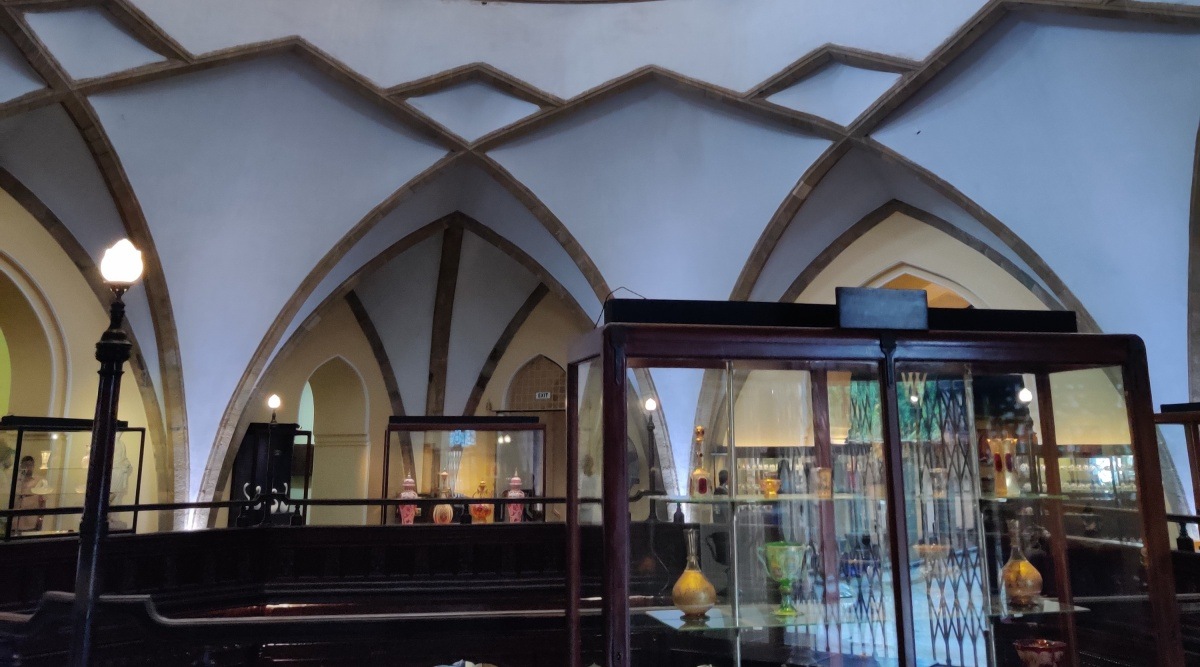 The museum has 70,000 objects in its collection. (Express)
The museum has 70,000 objects in its collection. (Express) CHHATRAPATI SHIVAJI Maharaj Vastu Sangrahalaya (CSMVS), which is undergoing restoration, is ready to shed most of its scaffolding and unveil its newly refurbished building next month.
In January, CSMVS will commence its centenary year, and the Grade I heritage structure’s restoration was timed for this milestone. While the previous restorations focused on parts of the museum, the current project, the most extensive one since the museum opened in 1922, addresses the whole precinct.
Designed by Scottish architect George Wittet, the building was called the Prince of Wales Museum of Western India until it was renamed in 1995.
The complex, comprising the main building, an annexe, a visitors’ centre, a children’s museum and a lawn, is called the Crescent Site, owing to its shape. CSMVS director Sabyasachi Mukherjee, who lives on campus, described the museum building as “the jewel on the crescent”. “The museum is more than just a building. It is also a symbol of cultural unity,” he said.
The museum, an autonomous, not-for-profit body, commissioned award-winning conservation architect Vikas Dilawari to undertake the restoration. Dilawari, who started in 2018 with a year-long audit, devised a four-part plan, starting with exterior repairs of the main building and the annexe, then interiors, the dome, and ending with the museum premises. Sponsored by Tata Consultancy Services, the project cost is Rs 21 crore.
Restoration work was scheduled for completion ahead of the centenary year, but the pandemic, lockdowns and unseasonal rains delayed it. “Even so, we took advantage of the lockdown. Since the museum was shut, we started doing the interiors early on,” Dilawari said.
The museum has 70,000 objects as part of its collection, of which 2,000 were on display during the restoration phase. By January, restoration will be complete in critical areas such as the key galleries, grand staircase, sculpture gallery, European art storage and the curators’ office. The museum will also bring back its former display of about 10,000 objects.
The museum’s glistening dome placed on a lotus pedestal is one of its major features. Dilawari said the original dome was lime plaster and bore the brunt of algae and moss over time. Around the late 1960s, lightning struck the dome and it had to undergo heavy repairs, undertaken by engineer J G Bodhe, who would later become the city sheriff. As part of the repairs, Bodhe added a layer of bluish China mosaic to the dome, to prevent water seepage and moss. Dilawari will repair the dome and redo the mosaic in the process.
Of equal importance is the dome interior, for which Dilawari has provided a new colour palette. He has also rethought its lighting with the help of Pune-based lighting consultant Suresh Koke. Earlier floodlights have been replaced by ambient lights that will deflect off the dome. “The original idea of the dome was to make light fall into the gallery below,” Koke said.
Over the years, the museum has added modern amenities. “A building has to evolve with time. If we don’t change, the present will reject us. What is important is the conversation between past and present,” Mukherjee said.
- The Indian Express website has been rated GREEN for its credibility and trustworthiness by Newsguard, a global service that rates news sources for their journalistic standards.

